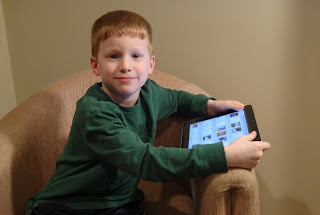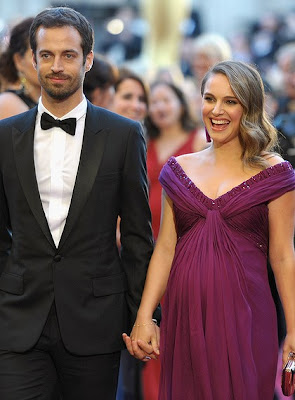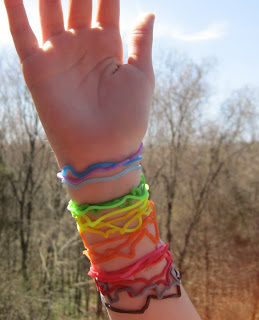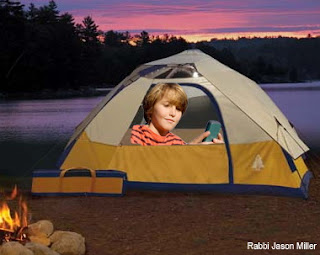One of goals of the Passover seder is make this ancient, traditional ritual speak to us today. On Monday night, throughout the world, Jewish people will retell the story of the Exodus with the commentary of the Haggadah.
For me, the most poignant part of the seder ritual is the section describing four different individuals. These four children have been used as metaphors throughout the ages to show the varied personalities of humankind. They have been portrayed in creative ways through art and other media. Jay Michaelson recently compared the Four Children to characters on the hit TV show “Glee.”

Michaelson writes that ‘Glee is… among the most ‘out’ Jewish shows to grace the small screen. Like the show’s gay, disabled, multiethnic and differently sized kids, what’s interesting about its Jewish characters is how their difference marks them as ‘other,’ but, precisely as it does so, includes them in a very 2011 world in which difference is the one thing we all have in common. As it happens, the four Jewish characters in McKinley High School’s glee club map quite neatly onto the four children of the Passover Seder, and the way each of them performs his or her Jewishness shines a different light on American Jewish identity, and on the themes of the Passover holiday.”
A few years ago, I compared the Four Sons (recently changed to “Four Children” for egalitarian reasons) to four distinct male students I had taught over the years in various Hebrew School settings. I recognized that the descriptions of the Four Children resonate with different learning styles and abilities. I have changed the names of the students to protect their privacy.
Teaching to All: The Four Children in Our Classrooms
Several of my young students have made lasting impressions on me as a teacher. However, four of these students in particular, and specifically my interactions with them, have helped define me as a teacher and influenced my educational methodology.

During my second year of Rabbinical School, I was asked to teach a class of unruly seventh graders in a suburban New Jersey synagogue school. Out of the fifteen or so seventh graders, there was one over-achieving sixth grader. Ethan had been pushed up a grade because he consistently claimed boredom in his previous years of religious school. After the first rough month, I effectively established proper classroom management, but one student remained disruptive. Once I recognized that Ethan had to be challenged in more advanced ways than the other students did, we connected. His interests lay in grasping difficult Talmudic concepts and halakhic disputes. While the other students worked to make sense of the Hebrew language, Ethan spent class time deciphering pages of Talmud and then he would review them with me after class. To this day, we’re still teaching each other, as I spend a couple of hours at his home each week introducing him to the texts I’ve encountered in Rabbinical School.
Then there was Andrew. Andrew was the first student I met on my first day of teaching fourth grade afternoon religious school during my first year of college. I could tell instantly that he was what teachers would label as “the bad kid.” And sure enough, he spent his time in class testing me. It wasn’t a normal day in class if Andrew didn’t question the point of even attending Hebrew school at all. As a rookie teacher without much supervision, I made a ritual out of sending Andrew out of the class each time he misbehaved following numerous warnings. It was only after a frank discussion with him before class one day that I realized the problem was mine. I might have been teaching the right information, but I wasn’t teaching it in the right way for Andrew. That class was a watershed moment because from that day on, I approached Andrew differently as a learner, and he responded by changing his attitude in the classroom. Andrew was my star student the following year in fifth grade and in the subsequent sixth grade. Last year during Pesach, we had a chance to sit together, catch up, and study a little Torah. I took the opportunity to wish Andrew well as he prepared for his first year of college.
When I received a phone call asking if I would consider tutoring a young boy named Jonathan, I was given a stern warning from his mother. “Jonathan, well, he has a learning disability. It’s severe. You know, he’s just not a real smart kid and he couldn’t handle Hebrew school.” I accepted the challenge nevertheless, and discovered that Jonathan learns best when the material can be connected to his interests. We talked about Judaism in hockey terms – his favorite sport. I would ask Jonathan about a rule in professional hockey, and then, I would explain a rule in Judaism. And since he could only concentrate for small amounts of time, we would study the Hebrew alphabet or holidays or Jewish values, and then take a break and schmooze for a few minutes. The relationship developed, and after four years, I officiated at Jonathan’s Bar Mitzvah. The boy who was told he wouldn’t have a bar mitzvah because he’d never be able to read Hebrew led the congregation in a beautiful Havdallah service and taught us how he understands his role as a responsible member of the Jewish community.
Another student who made an impact on me as a teacher, perhaps without ever knowing that he did, was Kevin. Kevin was a fourth grade boy with autism whose parents requested that he be mainstreamed into religious school even if it just meant sitting in the back of the room and watching the other children learn. He rarely spoke, and when he did, it was never applicable to the class’s conversation. One day, as the other students worked on an art project, I handed Kevin some paper and some markers. I asked him to draw whatever he wanted. He put marker to paper and depicted the various themes of Rosh Hashanah – the exact topic the class had been discussing the week prior. Kevin didn’t, and indeed couldn’t, articulate that he understood the lesson until I asked him to respond in the way that best suited his learning style. His disability made him the student who just didn’t have the capacity to respond – or at least not in the normative way. K’neged arba’ah banim dibra haTorah – Four students, four very different types of learners. And four very different approaches that I, as a teacher, had to utilize.
Howard Gardner, a professor at Harvard, defines seven types of intelligences. Some students, he explains, are more skilled with language, while others are more logical or spatially perceptive. Some learn by physically acting out new skills, and others are better listeners. Some learn better in groups, and others are more introspective. These are the multiple intelligences. It’s no secret that we each learn best in different ways, but the million-dollar question is how teachers can best teach to all students, to all learning styles. This is the central objective of my rabbinate – to be a Jewish educator who can reach each student in the most optimal way for that student to best comprehend the content knowledge. And it is a challenging objective. As a student of Gardner, I understand that I cannot value any one of the intelligences over another – and therein lays the challenge of meeting each student’s needs as a learner.
The debates among educators today focusing on the best practices for teaching are not new to us. In fact, we see them come alive each year at the Pesach Seder. The midrash of the arba’ah banim, the Four Children, presents four individuals who ask about the tradition in very different ways. The wise, the rebellious, the simple, and the one who does not know how to ask. They are four very different learners who need to be addressed as individuals. And the Rabbis of the Mishnah, in their wisdom, understood this well. In Mishnah Pesachim, they prepare us for the Seder by teaching u’lefi da’ato shel ben aviv melamdo – that parents are meant to share their Jewish identity with each child “according to his or her intelligence,” taking into account background, age, personality, attitude, and learning style. Perhaps without possessing the language that Gardner introduced to us over twenty years ago, the Rabbis still understood the concept of multiple intelligences.
We see this elaborated on in Pirkei Avot – the Teaching of the Sages. We learn about four types of students. Maher lishmo’a u’maher l’abed – quick to understand but quick to forget. Kashe lishmo’a v’kashe l’abed – one who understands with difficulty but seldom forgets. Maher lishmo’a v’kashe l’abed – quick to understand and seldom forgets much like our wise child at the Seder. And kashe lishmo’a u’maher l’abed – learning is difficult for this student and when knowledge is gained, it is not retained. Further, in Pirkei Avot, metaphors are attributed to these four learners: the sponge, the funnel, the strainer, and the sifter. These mishnayot describe four diverse learners, but they do not advise on how to best instruct them. The Haggadah addresses this need.
The Seder is a pre-packaged curriculum that considers the multiple intelligences. Dr. Ron Wolfson characterizes the Seder as “a talk-feast in four acts.” And throughout these four acts, a variety of teaching methods are presented, making the Seder a model for teachers. The Pesach Seder, as a system or process, demonstrates that we need to have a supply of pedagogical tools at our disposal when presenting information.
Throughout the evening and into the night, the Seder keeps our attention and that of the children. It does this through experiential learning, with songs and games, with show and tell, through interpretive text study, and by way of a forum for questions and dialogue. The Seder Plate, the eating of odd mixtures of food, the mnemonic devices, the telling and re-telling, and the catchy tunes are all ways to attract our varied learning styles. And if we want everyone at our Seder to truly feel a part of the Exodus from Egypt, as is the mitzvah, then it is incumbent upon us to provide the telling, the Haggadah, in a manner that allows everyone to receive the Tradition in the best way possible. We must draw on our creativity for this to work. And we must not give up. We must be persistent, telling the same story over and over in different ways until we get it right for every learner assembled in front of us.
Maimonides saw the need for this approach as well. He suggested ways to arouse the children who are too bored or cynical at the Seder. His words encourage us to invent our own provocations for these types of children. He understood the intention of the Rabbis in trying to stimulate inquiry and, perhaps before his time, Maimonides saw the need to motivate those who were apathetic at the Seder due to alternative styles or barriers to learning.
The complication about how to teach to the multiple intelligences is that there are more than just four types of learners. And there are more than just seven intelligences to consider. Each of us possesses characteristics of the Four Children. And we each respond best to different teaching techniques depending on the subject, depending on the environment, and depending on our mood. The Four Children provides a strategy for addressing four different aspects of each student.
Rashi, the Medieval French Biblical commentator, questions the placement of the Four Children text in the Haggadah. He explains that we are not likely to think that it is connected to the section preceding it, but it is. In fact, he reads the section Baruch Hamakom Baruch Hu right into the Four Children section, telling us that it is samuch – connected. Thus, Rashi’s understanding is that we are praising the Holy One for giving us the Torah and making it accessible to each of us, alluding to the characteristics of the Four Children. Reading Rashi with our understanding of the multiple intelligences, we, in effect, are thanking God that the Torah addresses different learning styles. I also understand this to mean that we are grateful for God’s gift of the Torah, but it is now up to us to figure out how best to teach it to our children and to others. Just as we are partners with God in creation, so too are we partners with God in education.
Being God’s partner means having to accept that there are those for whom barriers exist to learning due to a disability. This poses a challenge to both the learner and the teacher. In Judaism, we are empathetic to those for whom disabilities get in the way of learning. Some of our greatest leaders had disabilities. Both Yitzchak and Ya’akov suffered from blindness in old age. Moshe, our leader par excellence suffered from a speech impediment. And a handful of our rabbinic sages experienced disabilities that did not hold them back from being links in the chain of our Tradition.
Our Torah teaches us that we must not put an obstacle before the blind. This directive can be understood to mean that we must try to not teach in a manner in which the student will comprehend. We must teach so that the student will succeed. We must focus on their strengths rather than on their weaknesses or disabilities.
On the subject of special education, Rabbi Reuven Hammer wrote twenty-five years ago that “the responsibility of the Jewish community springs from the traditional Jewish emphasis upon the importance of education not only for the elite, but also for everyone.” We, as educators do not want to label children or pigeonhole them into broad categories as the Haggadah does, but we must identify their strengths as learners. And we must detect what barriers exist to learning for them, so we can work around those barriers and make the necessary connections for educational success.
Today, the Conservative Movement’s Solomon Schechter schools are addressing the growing need for special education by reaching out to those with exceptional learning styles and individual requirements. Camp Ramah’s Tikvah program is a national model for excellence in summer education for those with learning challenges. And a new organization is providing a wealth of special needs services for children with learning disabilities, creating a new, cutting-edge curriculum for Jewish day and synagogue schools.
MATAN co-founder Meredith Englander explained the goals of the curriculum in a recent article in the New York Jewish Week. “In each class, you are likely to have students who experience success through different modes of learning. This multi-leveled curriculum presents varied lessons, each coded with a special symbol indicating a particular learning style, such as tactile, experiential, kinesthetic, auditory or visual, providing different levels with different learning modes.”
The learner who is unable to phrase the right questions might possess a barrier to learning. It is up to us to help these learners in the she’eno yode’a lish’ol category construct the necessary questions. From the Haggadah, we learn that asking the right questions is an essential component of the learning process. The Four Questions that the youngest child at the Seder traditionally asks are also a pedagogical tool. They are spoon-fed to the child to precipitate dialogue and encourage question asking from all the participants at the Seder. But they are also used to teach the child who might not come up with questions on his or her own, that questioning is important and it is how we learn.
Wednesday night at your Seder, I encourage you to ask your guests about their own learning styles you would have seen that there exists a wide variety of approaches to learning at the table and that’s precisely why the Rabbis created the Seder in such a way. Think of your Seder as a classroom with a multiplicity of learning behaviors, with a wide-range of social and emotional paradigms. Just as educators cannot teach in one voice to the entire classroom and expect 100% reception, neither can we expect our Seder to be one-dimensional. We must teach to each individual in a unique way.
The Book of Proverbs advises chanoch lana’ar al pi darko – “Train a child according to his way.” This is the lesson I have learned as a Jewish educator over the past few years. While Ethan, Andrew, Jonathan, and Kevin may not always fit precisely in one of the Four Children categories of the Haggadah, they each, in their own way taught me about how they learn as individuals. They taught me how I must teach to be successful, always keeping in mind the learning needs of each individual student.
Education is a balancing act. We must embrace all of the learning styles represented by the arba’ah banim, and tailor our Haggadah, our telling of Jewish history, to each other’s intellectual capacity, attitude, and interests. Only then will we all have the merit of fulfilling the central mitzvah of this festival, b’chol dor vador chayav adam lir’ot et atzmo k’ilu hu yatza mi’Mitzrayim – that in every generation we must envision ourselves as having been part of the Exodus from Egypt. If the educational approach is personal, then our encounter with history will be a personal experience as well.
(c) Rabbi Jason Miller | http://blog.rabbijason.com | Twitter: @RabbiJason | facebook.com/rabbijasonmiller



.jpg)









